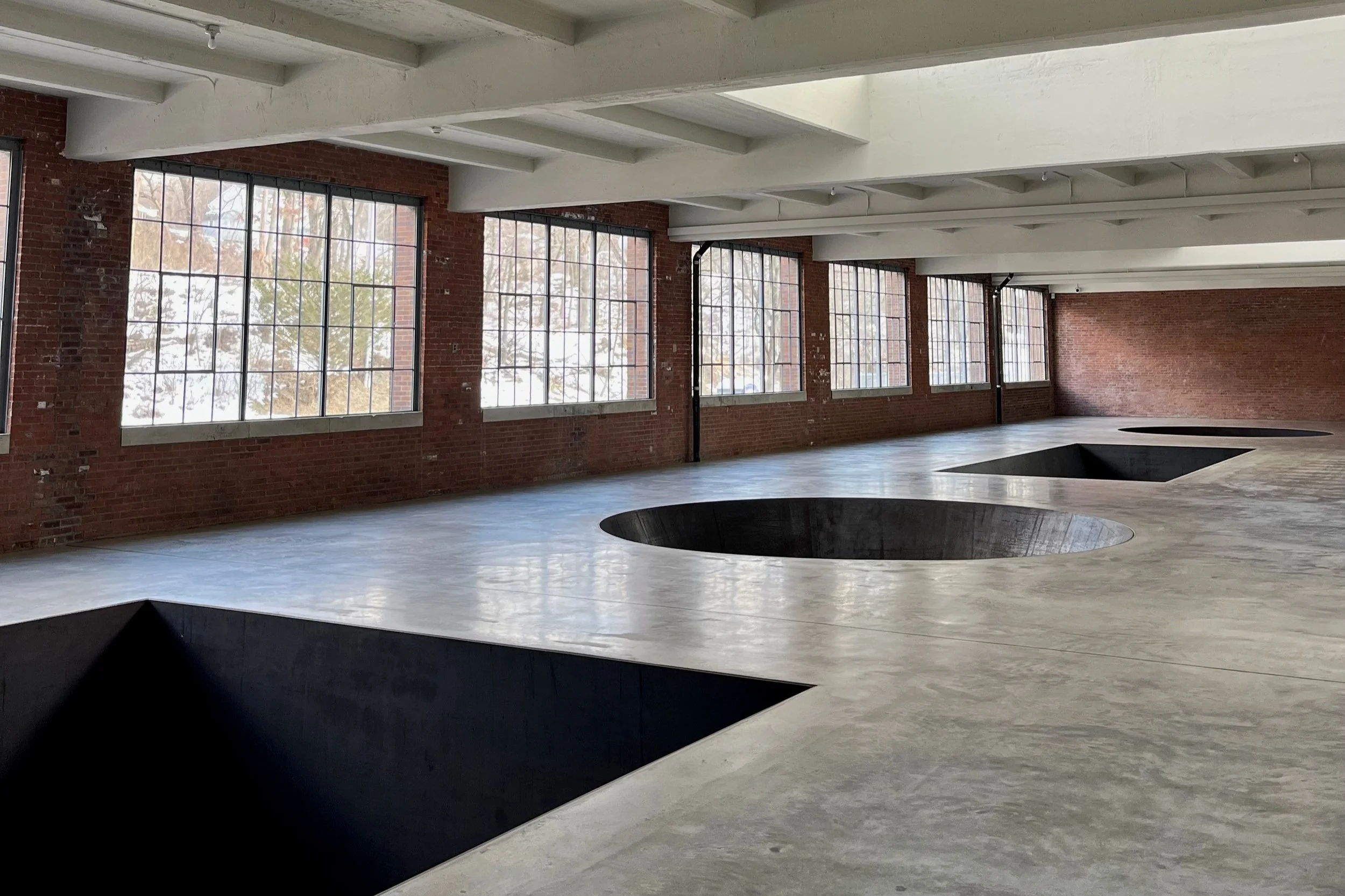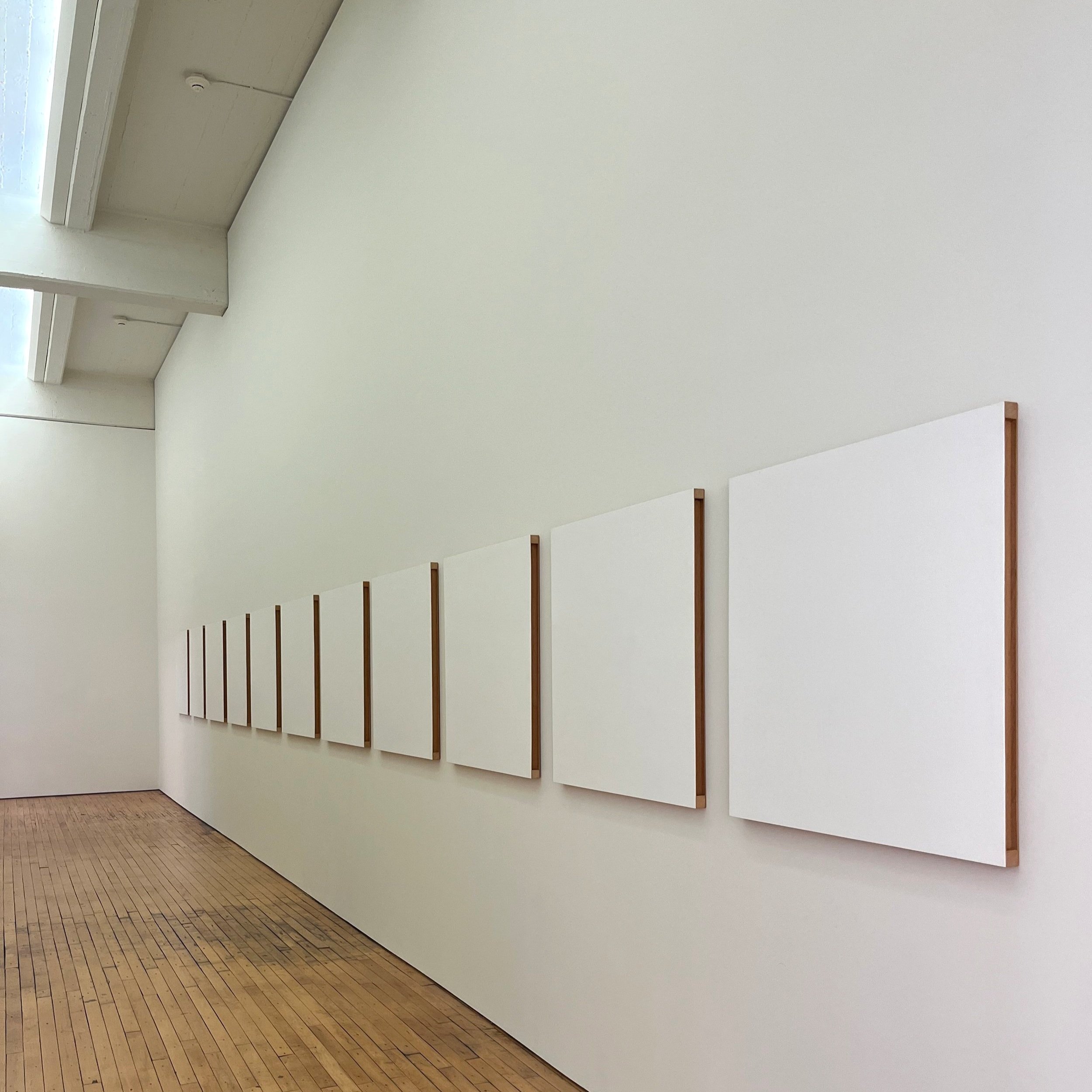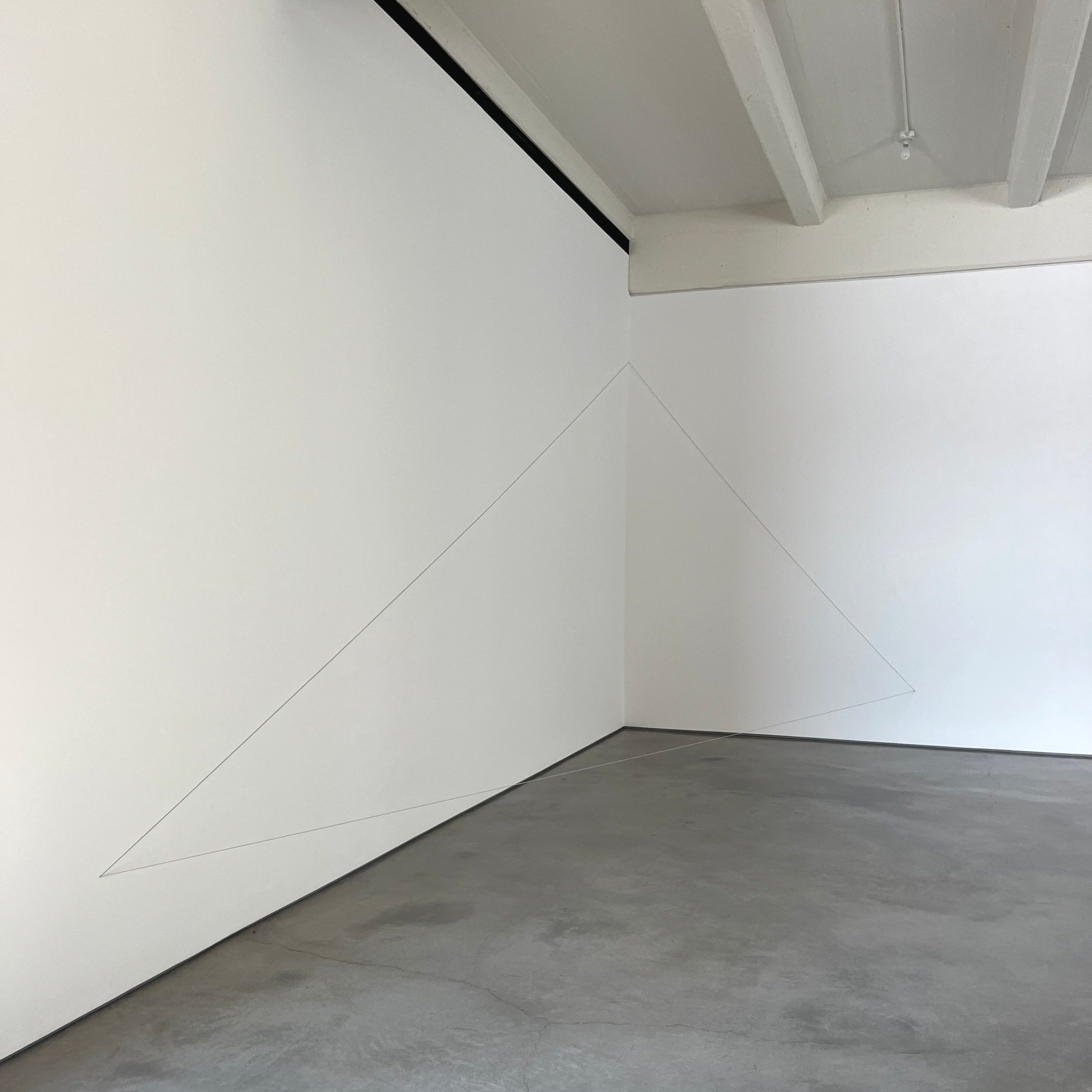Dia:Beacon
Michael Heizer - North, East, South, West (1967/2002)
Light and space as the backbone of a remarkable art destination
Dia:Beacon in Upstate New York has been recognized as a vibrant art destination since the opening in 2003. A former Nabisco box printing factory located near the Hudson river has been transformed into Dia’s most prominent location. The collection of Dia mainly focuses on conceptual and minimal art from the 1960s and 1970s. The art space of 300,000 square feet allows visitors to freely walk around the numerous massive art installations of dozens renowned artists. The Dia:Beacon site is ingeniously designed to support the vision of the artists. Therefore, this art location attracts annually ten thousands of visitors to the New York State despite the countless acclaimed art galleries and museums in the City.
Dia Art Foundation was established in New York City in 1974 by German art dealer Philippa de Menil and his wife Heiner Friedrich together with art historian Helen Winkler. “Dia” means “through” in Greek. The name of the foundation shows its aim to serve as a medium to help artists create. They have funded artworks which otherwise might never have been realized due to their scale or concept outside of the traditional museum idea. Dia respected the vision of the artists and did not interfere with their creation process. This approach resulted in an impressive arsenal of artists including Larry Bell, Melvin Edwards, Dan Flavin, Michael Heizer, Robert Irwin, Donald Judd, Robert Irwin, Gerhard Richer, Fred Sandback, Richard Serra… The collection continues to grow by commissioning a newer generation of contemporary artists which work aligns with Dia’s vision.
Dia Art Foundation has nine permanent sites across the United States and Germany as well as three changing exhibition spaces in New York State. A former industrial site was carefully converted into an exhibition area by architect firms Rice+Lipka Architects and OpenOffice in collaboration with artist Robert Irwin. The master plan and landscape were designed by Irwin which distinguishes this architectural project and gives the characteristic Dia touch.
When you visit Dia:Beacon, it might seem that only minimal efforts were made to renovate the former factory. The floor plan, numerous skylights, steel and concrete elements do provide the perfect backbone for a contemporary art museum. But do not be deceived; the transformation of the site into the current art destination was a huge and innovative project, yet executed in a subtle manner. The choice to work with artist Robert Irwin for the renovation was fundamental. As a pioneer of the light and space movement which explores the human perception, Irwin experimented with how the use of geometric shapes and light can affect the environment and the perception of the viewer. He carefully observed the location of Dia:Beacon and reintroduced elements of the environment and building leaving as little trace of his own hand as possible.
The installation ‘Full Room Skylight – Scrim V’ of Irwin at Dia Beacon exemplifies the practice of the artist and his architectural vision on the site. The installation only consists of two sheets of translucent fabric stretched in a ‘V’ shape across two connected galleries. The environment hugely impacts the experience of the work. The fabric is illuminated by natural light beaming through the skylights creating a feeling of fullness. This can either conceal or reveal the surrounding architecture depending on brightness, time of day and the viewer’s perspective. Another characteristic intervention is the play with opacity and transparency of the windows. There are parts where the glass windows are completely transparent and areas where the glass is cloudy. These seemingly small touches ensures that every visit to Dia:Beacon is different. Opaqueness affects the interaction of the natural light with the artworks, the awareness of the surrounding garden and its seasons.
The entrance of Dia:Beacon is a rather enclosed space in brickwork with intimate natural lighting. The intention is to let you start in a more darkened environment while at the same time you can sort of see through the building, you can see the beginning of the bright exhibition spaces. The visitor chooses his own navigation through the site. There is no dedicated route for your visit at Dia:Beacon. There is no chronological path nor is a selected theme route. There are even no descriptions or clear designations of the artists on display. Small QR codes allow the visitor to discover more about the artist or works of interest. Each artist has their own gallery space at Dia:Beacon. Often the galleries were created in collaboration with the artists themselves. Dia:Beacon chose to keep the floorplan open so you can have a glimpse of the other exhibition spaces, yet there are sufficient separations to remain the focus on the artworks of the individual artist presented. Since the collection mainly focuses on conceptual work from the 1960s and 1970s, there is obviously some kind of interaction between the artworks and the artists often knew each other and have exhibited together.
You can find the glass cubes and standing walls of Lary Bell, another artist of the light and space movement, next to Irwin. The site-specific installation ‘Six Gray Mirrors’ of Gerhard Richter also play with the architecture and the visitor’s perception since depending on the angle either the visitor, the high windows or the building itself is reflected. Fred Sandback creates room-filling volumetric forms with elastic cords, acrylic yarn or steel rod in the most minimal manner possible. Geometric figures or forms are created by precisely stretching a single strand from point to point. Thereby the three-dimensional space is delineated or divided by a minimal intervention which can be easily overlooked by the visitor.
Besides the more minimal works experimenting with environment, light and the architecture, the collection also holds more brutal(ist) works. The geometric barbed wire installations of Melvin Edwards are provocative due to the associations the viewer links to the material. The monumental installations of Michael Heizer give a similar feeling of agitation. Heizer plays with scale, mass and the relationship between positive and negative space. Dia:Beacon displays ‘North, East, South, West’, a series of four geometric pits, and ‘Negative Megalith #5’, a massive stone entombed in a wall cutout. The colossal works of Richard Serra focuses on industrial material and shaping it in unconventional forms challenging the physical properties. These highlighted artworks are only a fraction of what can be discovered at Dia:Beacon.
The art location at the Hudson River is a space established where art speaks for itself. Dia:Beacon allows visitors to freely explore the collection without an imposed route or distractions. The architecture of the site has been carefully calibrated to create the optimal environment for both the artworks and the visitors. The impressive collection of Dia could not have found a better destination.
3 Beekman St, Beacon, NY 12508, United States
Photos (c) Cultuurtoerist.






























































